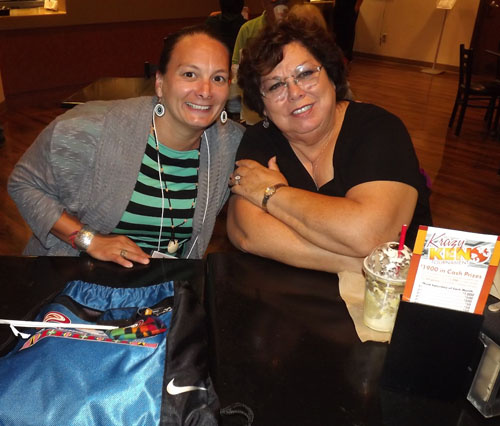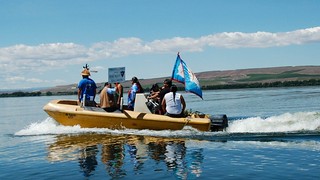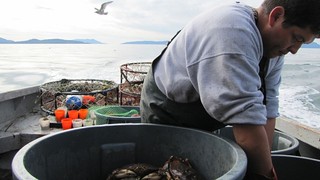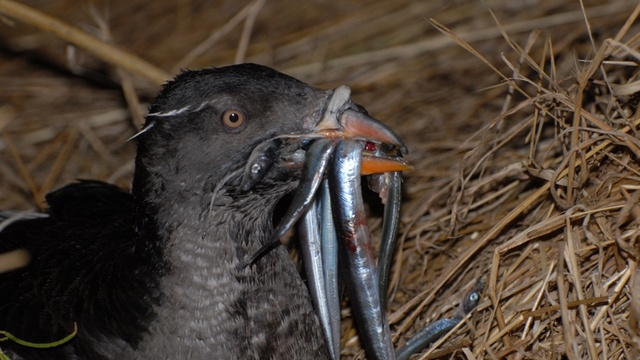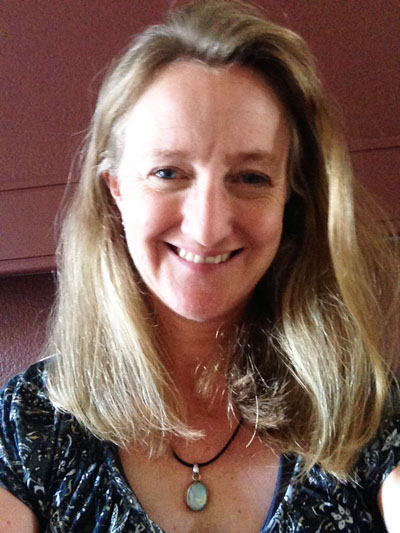
(Part three of a four-part ACEs series)
By Kyle Taylor Lucas, Special to Tulalip News
This is the third in a series of stories on Adverse Childhood Experiences (ACE) and the intersection of disproportionately high substance abuse, behavioral, and health disparities in American Indians as compared to the general population.
A landmark 25-year research project by the Centers for Disease Control and Prevention (CDC) and Kaiser Permanente has linked childhood trauma to major chronic illness and social problems such as heart disease, diabetes, depression, heart disease, diabetes, violence, suicide, and early death.
Begun in the 1980s, “The Adverse Childhood Experiences (ACE) Study is one of the largest investigations ever conducted to assess associations between childhood maltreatment and later-life health and well-being,” said the CDC. The study included more than 17,000 patients who provided detailed information about childhood abuse, neglect, and family dysfunction. Since the breakthrough study, hundreds of scientific articles, workshops, and conferences have helped practitioners better understand the importance of reducing childhood adversity to overcome myriad social and health issues facing American society. Learn more about the ACEs Study here: http://www.cdc.gov/violenceprevention/acestudy/. See the ACEs questionnaire, here: http://www.acestudy.org/files/ACE_Score_Calculator.pdf.
Federal Program Helps Build Family Resiliency with Home Visiting and Early Childhood Parenting Education
The Maternal, Infant, and Early Childhood Home Visiting Program (MIECHV) is a federal and state partnership administered by the Healthy Resources and Services Administration (HRSA) and the Administration for Children and Families (ACF).
The MIECHV program was established by the Congress in 2010 with an initial $1.5 billion investment. In March 2014, Congress extended funding through March 2015. Said, the HRSA, “While decades of scientific research has shown home visiting improves child and family outcomes, the program is the first nationwide expansion of home visiting.”
Consistent with research on ACE reduction, the program is based upon scientific research, which shows that home visits by a nurse, social worker, or early childhood educator during pregnancy and in the first years of life prevent child abuse and neglect, encourage positive parenting, and promote child development and school readiness. An HRSA white paper cites a recent Pew Charitable Trusts study that showed “every dollar invested in home visiting yields up to a $9.50 return to society.”
The program supports pregnant families and parents of children to age five to access resources and develop necessary skills for raising healthy children. All of the HRSA-supported home visiting programs are locally managed and voluntary.
According to the HRSA, “The Home Visiting legislation prioritizes American Indian and Alaska Native populations through the inclusion of a three percent set-aside for discretionary grants to Indian Tribes, consortia of Tribes, Tribal Organizations, and urban Indian organizations. Currently, the program supports 25 Tribal grantees’ home visiting programs.”
Several tribes and tribal organizations in Washington State have applied for MIECHV funding and have established programs that will help to reduce ACEs among their members and simultaneously help establish benchmarks and data long missing.
South Puget Intertribal Planning Agency (SPIPA) – Helping Build Family Resiliency by Increasing Traditional Native Parenting Practices
The South Puget Intertribal Planning Agency (SPIPA) is one of several local tribal organizations and tribes that have undertaken training and applying intervention and have begun measurements similar to the ACE Study indicators to address generational trauma, support prevention programs, and to strengthen families.
SPIPA is a five-tribe consortium that supports each tribe’s vision of success and wellness. Its mission is “to deliver social, human, and health services and provide training and technical assistance, resource development and planning” to its member tribal communities—the Chehalis, Nisqually, Shoalwater Bay, Skokomish and Squaxin Island Tribes.
Founded in 1976, despite a challenging economy, SPIPA strives to carry its past successes forward. In its most recent annual report, SPIPA Chairman Dan Gleason said, “While much has changed for the better at the five Tribes, the underlying issues that made the formation of SPIPA necessary still exist. These issues center on self-sufficiency for our families, youth, and elders as they strive to overcome external forces that are barriers to their personal, educational, and career development.”
Asked how SPIPA incorporates the ACE indicators in its work, Jennifer Olson, SPIPA Data Analyst and Evaluator, said, “We are doing some pretty exciting things about addressing early childhood trauma and the ACE Study, but we don’t use the term. We talk about it more in terms of historical trauma. We use a similar intervention and measurements to the ACEs within our own cultural context.”
Olson, who has been with SPIPA for the path fifteen years, earned MA degrees in both Public Health and Community Planning from the University of Iowa. Her work is focused on grant writing and program evaluation.
Olson said their staff has taken ACEs training, and “We have found the ACE measurements dove-tail nicely with our work. They especially align with our work on intergenerational trauma and diabetes.”
SPIPA is starting the fourth year of a six year project supported by federal MIECHV funding from the Administration for Children and Families. It is a Healthy Families Home Visiting Program geared toward tribes. “The Port Gamble S’Klallam Tribe and United Indians also received funding in that cycle,” said Olson. The program emphasizes culturally appropriate parenting skills to develop happy, healthy, well-adjusted children. “We blend our program to give support in teaching the basics of parenting to pregnant families and those with children up to three years of age,” said Olson.
SPIPA has an approximate budget of $450,000 to $600,000 to fund, in part, six home visitors (five of whom are tribal members) for four tribes and “We also have urban Indian Temporary Assistance for Needy Families (TANF) offices in Tacoma and Bremerton,” added Olson.
A longstanding obstacle in Indian Country is lack of benchmark data making it difficult to measure success which could help communities to secure continued program funding to both reduce ACEs and fill the data gap for other programs. Asked how SPIPA measures success, Olson replied, “We have served over 120 families that are now getting developmental screening who were not previously screened. Four tribes and two urban Indian sites now have early intervention services for birth to three.” Included among their early intervention services are child development screening, parenting education, family wellness assessment, resource/referrals, parent-child interaction activities, ‘Positive Indian Parenting,’ and child development classes.
“In terms of measurement and evaluation tools, SPIPA incorporates some of the federal goals of improving maternal/infant health, reducing child injuries or maltreatment, increasing school readiness, access to healthcare, addressing family violence, family economic self-sufficiency, and referrals for other community resources,” said Olson. She emphasized that it is also important to their member tribes to include a “full program” measurement in which they ask, “Does this program increase traditional Native parenting practices?”
SPIPA does developmental screening with a tool called the “Ages and Stages Questionnaire,” and they utilize an annual survey that incorporates screening for domestic violence, depression, parental stress, family planning and other parenting issues. They have a family assessment called “Life Skills Progression,” which both identifies development and stresses in the family’s health.
Asked about foster care, adolescents, and teen suicide, Olson noted they have a foster care program, but they are not yet applying the ACE Study to adolescents. She added, “We do screen for all ten of the ACE questions at least once per year and routinely with all of our home visits.” SPIPA incorporates the ACE measurements in its work with parents and guardians, and foster home families, for substance abuse and domestic violence screenings among others.
“It is sometimes hard to convince families how critical early childhood education, parenting education, and continuing support are to the family. We meet twice a month with families. This is a new concept for many, so we try to emphasize early screening and intervention,” added Olson.
The SPIPA Healthy Families Home Visiting Program grant has another two to three years and Olson is hopeful the program’s funding will be continued indefinitely, but it is dependant upon congressional approval.
The United Indians of All Tribes Foundation – Reducing ACEs in Urban Indian Population through Culturally Relevant Parenting Program
The United Indians of All Tribes Foundation (UIATF) is a non-profit corporation in Seattle. UIATF was founded in 1970 when a group of Northwest Indians and supporters, led by the late Bernie Whitebear, engaged in an occupation to reclaim Fort Lawton as a land base for urban Indians. Eventually, a twenty-acre site was secured at Discovery Park, and in 1977 the Daybreak Star Indian Cultural Center was completed. The UIATF provides social, education, economic opportunities, and cultural activities for the local urban Indian community.
One of the Foundation’s central services for the urban Indian community is the Ina Maka Family Program with its goal to improve family bonds by visiting in the home, making referrals and coordinating with community resources and support. Their work aims to reduce crime and/or domestic violence by making improvements in family self-sufficiency. They focus on “prevention of injuries, child abuse, neglect or maltreatment, and reducing emergency room visits, improving school readiness and achievement.”
In 2012, the Ina Maka Family Program began a five-year home visiting program funded by the HRSA and ACF. As noted, ACE research has established the link between infant, early childhood home visiting and family health. In 2012, the Ina Maka Family Program conducted a community needs assessment among members and service providers, the results of which they have used to develop a home visiting program.
Katie Hess, who is Program Manager for the Ina Maka Family Program, has been with the foundation for almost three years. Hess is part Native Hawaiian and earned her MA in Public Health from the University of Washington. She was born and raised in Seattle and went to Berkley where she earned a B.A. in Creative Literature.
Speaking to the UIATF’s work to reduce ACEs, Hess discussed the results of their qualitative and quantitative data collection, which she said, “provides contextual support for the need for home visiting in the King County American Indian/Alaska Native (AIAN) community and guidance for our choice of the appropriate curriculum that will best fit the needs of our community.”
Hess noted, “We are participating on the tribal side of this, but there is also state expansion. At the same time we received our five-year project, the state is using a public-private program through “Thrive by Five” for home visiting programs. The state side is where most of the home visiting money is coming from. They’re doing work with tribes, too, and have recently funded a two-year home visiting (promising practice) program for a tribe.”
In terms of measurements, Hess said, “What’s really special about this program is that we work closely with an evaluator, and we have real vigorous measurements. We established our own measurements. We looked at what’s a realistic measure and how to measure change. For example, breast feeding. We’re only seven months in and data takes awhile to collect, but we also will be doing more qualitative measurement.”
Asked about what she considers the foundation’s next milestone, Hess said, “Oh good question! We only have another year and a half of home visiting in our five-year project. For us, our goal is to ensure our program and data is strong enough to ensure continued funding.” Hess emphasized that in their data and evaluation process, they affirm theirs as a full-service urban Indian organization providing critical services that are “culturally designed.”
The Ina Maka Family Program used a survey tool and results to identify all of the components of its home visiting program. “We have an advisory board that helps guide our work, so we’ve also included pieces that were not in the assessment. It’s going very well. We have about 29 families and we’re still recruiting,” said Hess.
Noting that their home visitors are on a learning curve, Hess nonetheless expressed confidence in their training and program. “Three of our four home visitors are tribal. All have training in curriculum. We also have two elders, two grandmothers working in our program who advise and guide our home visitors. They have a lot of experience in early childhood education. They go on some of the home visits. The other piece that we do is we work with an evaluator. We’re constantly making changes and enhancements to ensure it’s a good fit for our Indian community.”
Asked whether they had utilized the ACE measurements, Hess said, “ACE was not part of our original assessment because people were only starting to talk about it two years ago.” However, she stressed how valuable the ACE measurements are. She explained why. “From a programmatic perspective we want to ensure that we have the tools in place to help our clients so that they are not re-traumatized. Our home visitors are familiar with the ACEs and have an understanding of generational trauma, but we want to ensure that the trainers are prepared. We just haven’t gotten there yet. It can be a really slow process,” but she said they wanted to get it right before including the ACE questions.
In terms of its other efforts to address childhood adversity, Hess replied that at United Indians, “We’re doing our best; we have a workforce program where individuals can receive support to find employment or educational opportunities. We have a Department of Corrections program that provides religious and cultural services with a chaplain, other activities, and helps to coordinate powwows.”
Asked whether their programs include training on Fetal Alcohol Spectrum Disorders (FASD), Hess noted that while theirs is still a new program, all home visitors have prior training on FASD, and it is on the list for further specialized incorporation into their programs.
Speaking to teen suicide education and prevention, Hess noted, “There is nothing in the schools, but there are several other programs in the Seattle area that we partner with—Clear Sky, and Red Eagle Soaring—a youth theater group, and we partner with Seattle Public Schools education program. We will be opening up an ECAP [Early Childhood Assistance Program] in January at Daybreak Star and geared toward school readiness and long-term school success.”
Although the program is not presently applying the ACE Study questions in their surveys and home visits, as does SPIPA, they do intend to incorporate the research after further training. It is evident that their Maternal, Infant, and Early Childhood Home Visiting Program addresses the findings of the ACE Study and subsequent research—that reducing childhood adversity is essential to overcome myriad social and health issues facing society and disproportionately—the American Indian and Alaska Native communities.
Hess said, “I love doing this work because home visiting has great potential for families and to make some big changes in the long run for the urban Indian families we serve.”
Next in the Series
Both the SPIPA and UIATF tribal programs and overall MIECHV program data thus far demonstrates tribal communities are creating resiliency among their members by reducing adverse childhood experiences. The final story in this series will look at subsequent ACEs research, including neurobiology, epigenetics, and the developing brain. Because ACEs extend beyond the nuclear family to educational and child welfare policies, and to institutional racism in police, courts, and other institutions controlling the lives of Indians, those intersections are reviewed. Finally, the series will explore the potential of ACEs measurement in prevention and for building resiliency for American Indian people and tribes.
Kyle Taylor Lucas is a freelance journalist and speaker. She is a member of The Tulalip Tribes and can be reached at KyleTaylorLucas@msn.com / Linkedin: http://www.linkedin.com/in/kyletaylorlucas / 360.259.0535 cell


